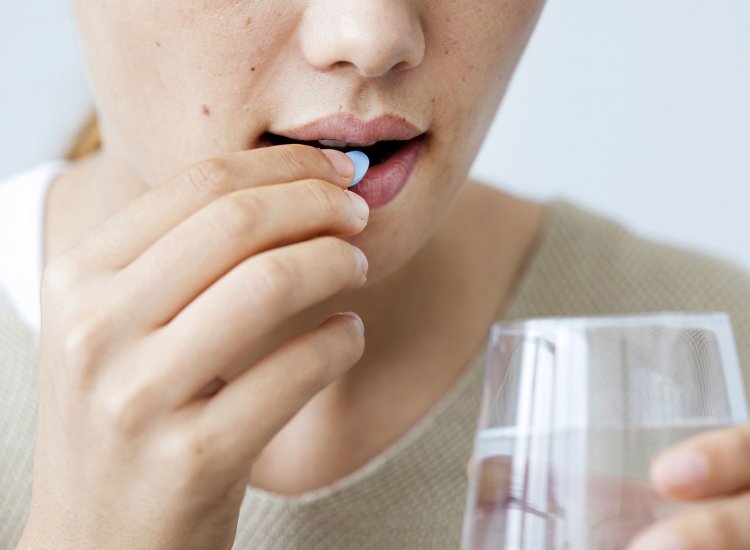Free Pouch & Gloves on orders ₹1999+
Free Skin Care Planner 2026 on ₹2499+
Free shipping on all orders
Free Trial-Kits on all orders
₹ 0
₹ 0
₹ 0
Free Pouch & Gloves on orders ₹1999+
Free Skin Care Planner 2026 on ₹2499+
Free shipping on all orders
Free Trial-Kits on all orders


UNDERSTAND MY SKIN
Some people with sensitive and reactive skin types have redness and small, visible vessels on their face. These signs often appear temporarily, but they can become progressively worse and eventually permanent.

Redness or small visible vessels are skin symptoms caused by an abnormality in the face’s venous system, which is not working normally. Redness, with or without heating, is temporary or longer lasting.
Certain factors aggravate the condition:
Rosacea and couperosis, which is a form of rosacea, most often cause redness and visible vessels to appear on the face. But these aren’t the only causes. Certain dermatological diseases that cause dilated blood vessels stimulate couperosis and flushing can correspond to underlying diseases that must be explored. In addition, certain medications can cause vascular dilations to appear on the face or increase those already present. A dermatological consultation is therefore warranted if there are doubts.

Couperosis is a dilation of small superficial skin vessels in the superficial dermis. The medical term corresponding to this vascular dilation is telangiectasias.
The network of superficial vessels forms a "capillary system" made of reddish linear lines on the face. Some of this network’s parameters may vary, depending on the person and his/her skin type, the age of the process, and the internal or external temperature or changes in temperature. The vessels are more or less wide and their colour ranges from bright red to purple or even bluish.
The topography varies but is usually relatively symmetrical. Sometimes only the nostrils are affected, but the cheekbones or the cheeks, more generally, are the most common area affected. However, the whole face may be affected.
When the tree branches in telangiectasias are difficult to see with the naked eye and redness dominates, this is called erythrosis.

Logically then, the general term describing the condition mid-way between the two variants is erythro-couperosis.
A spider angioma may be observed with couperosis. This is a star-shaped vascular tree containing a more or less raised central red spot.

In most cases, couperosis is not related to any underlying disease; it appears slowly and progressively. It is a form of rosacea. .

Flushes may occur before couperosis appears. The other signs of rosacea are erythrosis and possibly red papules (small spots) or pustules. Alcohol consumption does not cause couperosis or rosacea.

People with fair, thin skin are more often affected.
Rosacea is a common dermatological condition that only affects the face, particularly the nose, cheeks, forehead and chin. The eyes may be affected (ocular rosacea) but this is rarer. Rosacea is not acne, and the term “acne rosacea” which is sometimes used, is being phased out. This visible skin condition is often psychologically challenging because it causes disfiguration and is frequently mistaken for a sign of chronic alcoholism.

1/ The vascular form: erythrosis and couperosis
It appears as redness on the face, with or without couperosis (small dilated blood vessels on the cheeks and nose, called telangiectasias). This redness may sporadically be accompanied by vasomotor flushes, i.e. sensations of hot flushes on the face that quickly dissipates.

2/ The papulo-pustular form
Erythrosis is combined with flare-ups of pimples that resemble acne (red spots and small pustules, but no comedones), still found exclusively on the face.

3/ The hypertrophic form
This form characterised by a large, bumpy nose is much rarer and almost exclusively affects men. It is called rhinophyma and is not related to alcohol consumption, unlike what many people think. All of these symptoms often cause significant everyday discomfort and impaired quality of life.





Rosacea is three times more common in women than in men, and people with fair skin are the most affected.
Symptoms often appear around the age of 30, but it has a peak age of around 50.
A frequent characteristic of rosacea is that it occurs in sensitive skin.
Visit your dermatologist so he/she can confirm the diagnosis and indicate whether you suffer from couperosis, rosacea or another condition.

Preventive treatment includes limiting triggering factors, such as temperature changes, UV exposure, hot drinks, spicy dishes, coffee and alcohol. Alcohol does not trigger this condition, but consuming it may exacerbate symptoms. If flushing occurs, doctors recommend letting an ice cube melt in your mouth during the first few minutes of flushing.

Certain medicated treatments may be prescribed by the doctor:
That said, rosacea is not cured by these treatments because it progresses in flare-ups and local treatments need to be maintained continuously.
Redness is difficult to treat; however, laser treatments are particularly beneficial, especially pulse dye lasers, Nd Yag and KTP. The various types of vascular lasers are described below.

The preferred treatment for couperosis is laser treatment. This technique has significantly changed the management of this problem. There are several types of laser treatments for vascular lesions, i.e. laser treatments that specifically target the vessels and the haemoglobin found in red blood cells: KTP laser which particularly acts on the tree branches of couperosis, Nd:YAG laser, and pulse dye lasers which also act on erythrosis and spider angiomas.

Dermo-cosmetic treatments are useful for all cutaneous forms of rosacea and couperosis; they should be moisturising, soothing, non-occlusive and intended for sensitive skin. It is ideal if they also have vasculoprotective properties. It is also important to use appropriate cleansing products, limiting contact with tap water.
Photoprotection is also recommended. In some cases, redness concealing creams may also be helpful. (They contain green pigments that neutralise redness.)





